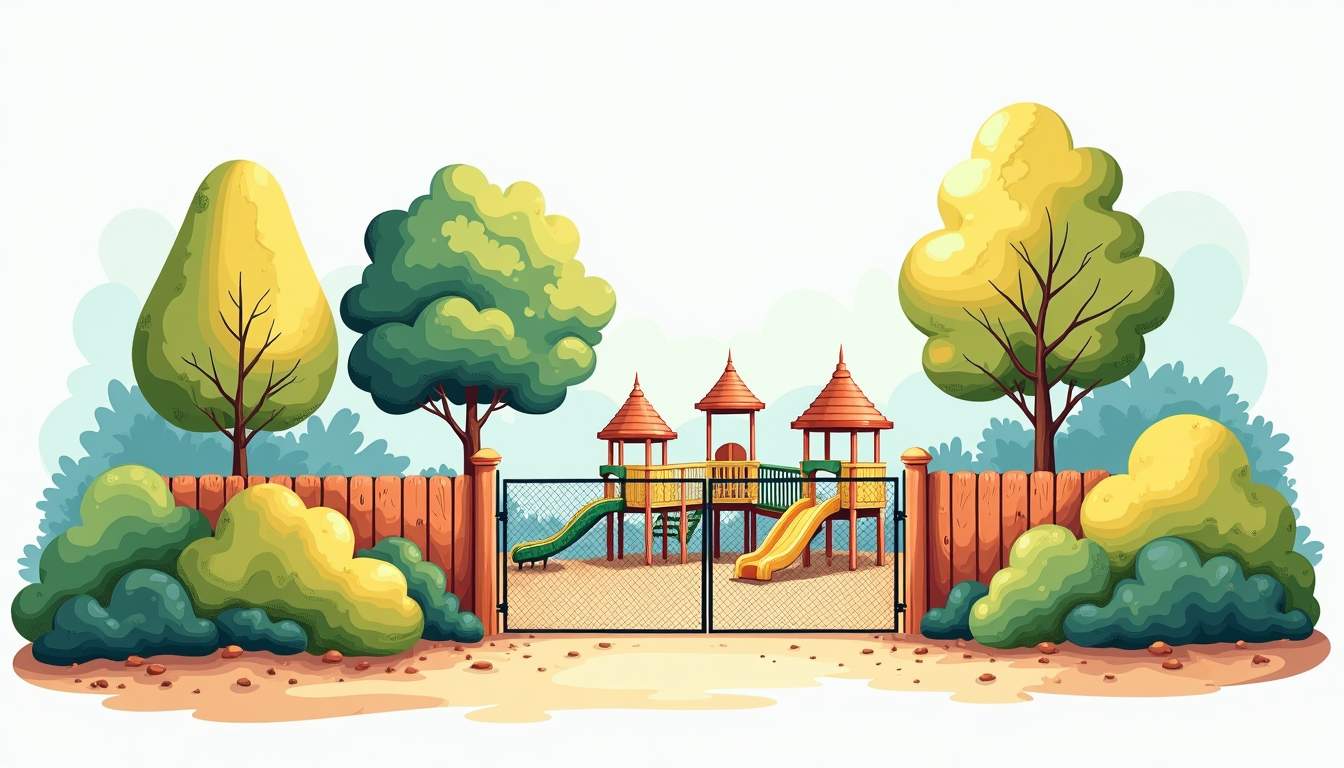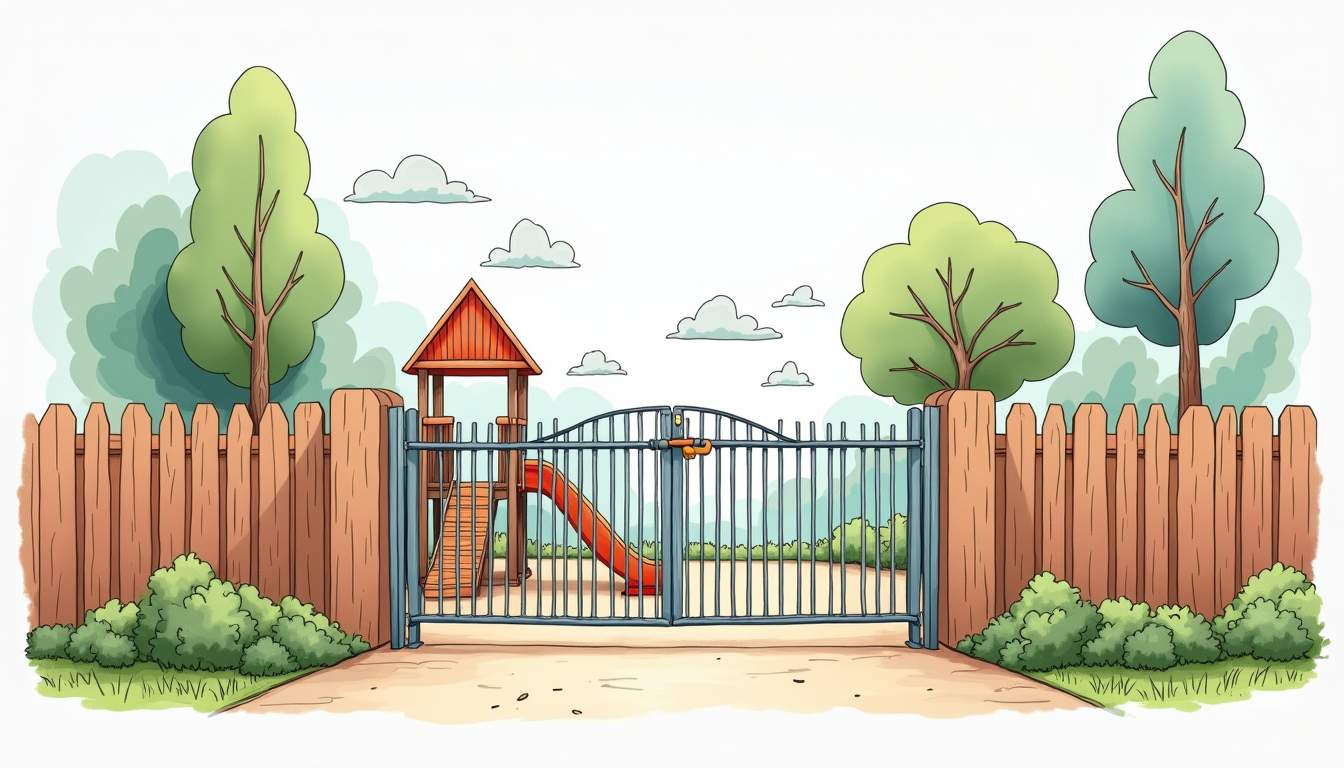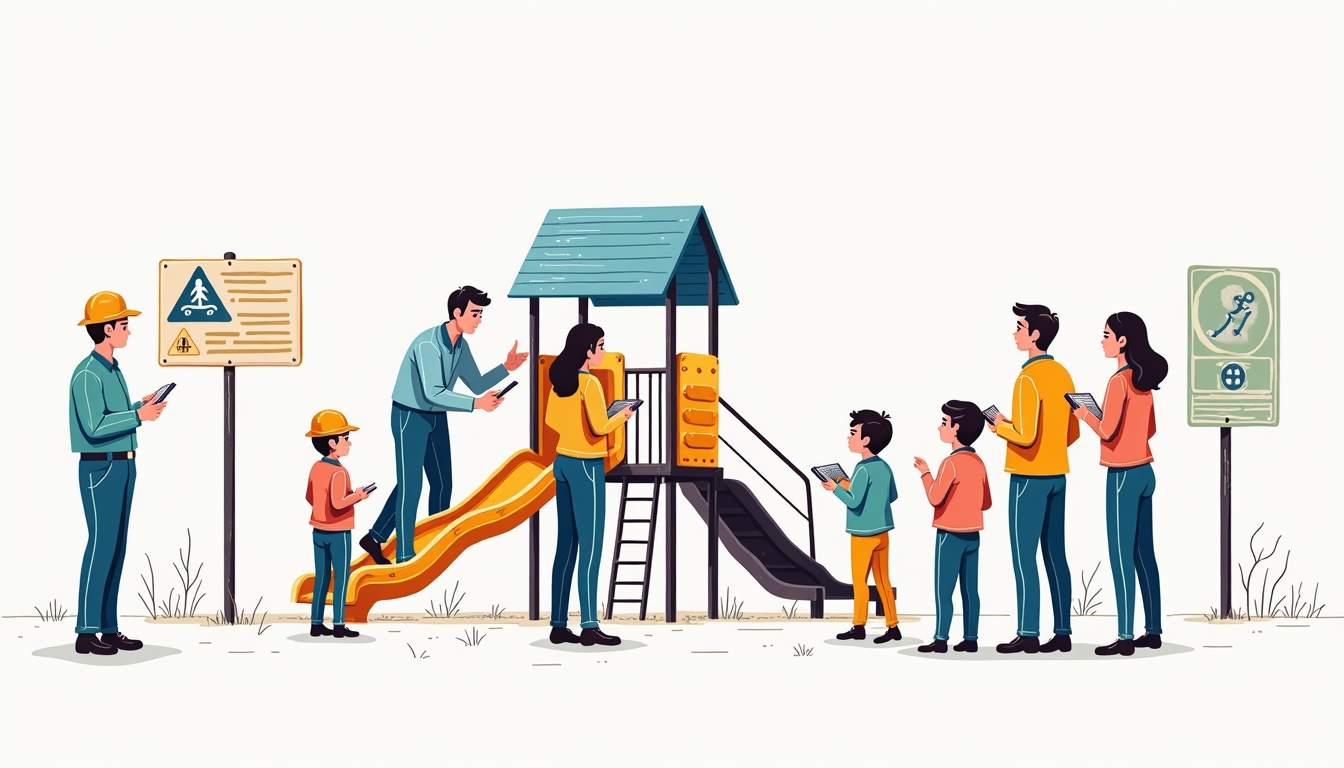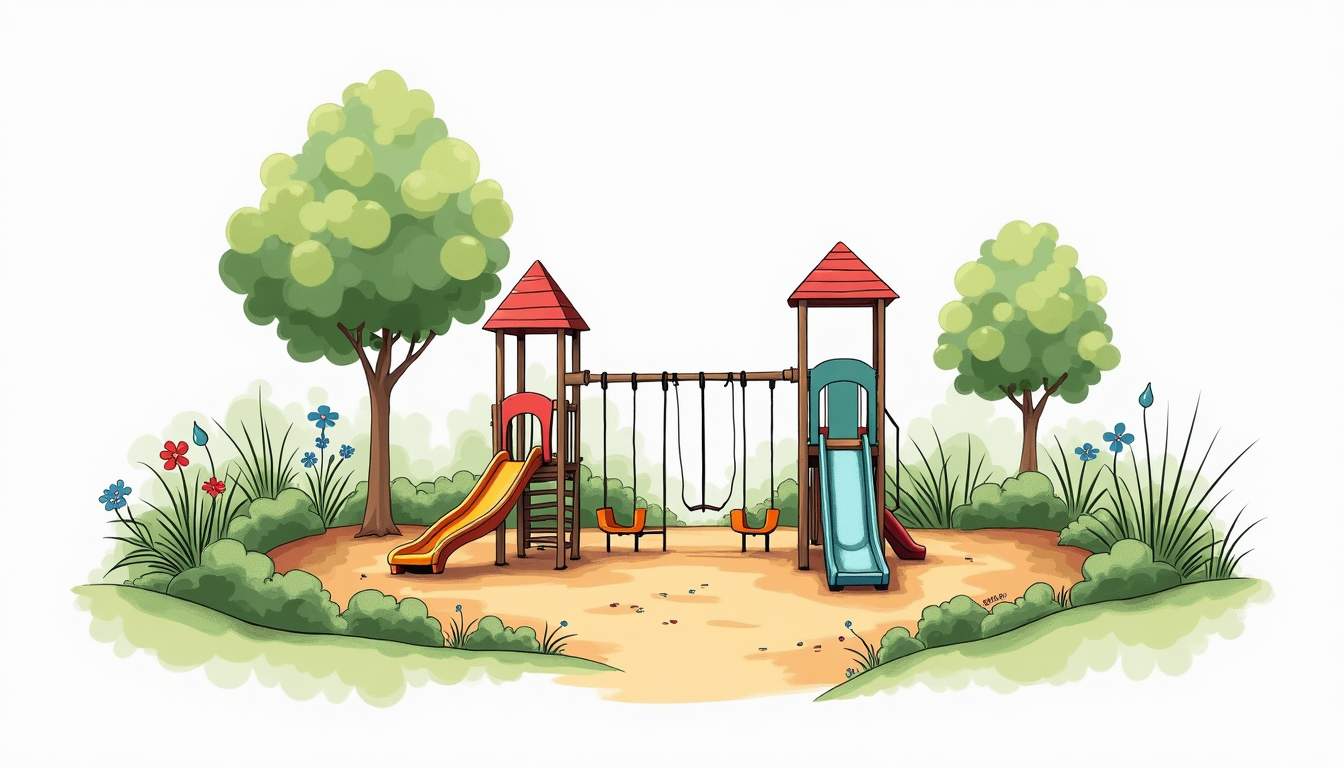
Children need space to run, imagine, fall, and get back up. Playgrounds and yards that invite exploration must also manage risk. Balancing freedom and protection is both an art and a science: careful site planning, thoughtful barriers, and natural buffering work together to create places where kids can play energetically without constant adult interference or hidden dangers. This article explores how gated access and natural buffering can be combined to produce safer play environments, offers practical design strategies, and highlights everyday considerations for caregivers, designers, and community planners.
Open spaces are inviting but can expose children to hazards like busy roads, bodies of water, or unsupervised public areas. Gated access acts as a first line of defense by creating a clear boundary between the play area and surrounding risks. It reduces the chance of children wandering into dangerous zones and gives caregivers an immediate, visible layer of control. A properly designed gate system also helps manage who enters the space, whether that involves restricting vehicle access, guiding pedestrian flows, or preventing pets from interrupting play.

Gates can be as simple as a childproof latch on a backyard fence or as complex as timed access points for community playgrounds. The key is proportionality: the level of access control should match the surrounding context and the typical users' needs. For instance, a school playground located near a busy street requires sturdier, more secure gates than a residential courtyard in a quiet neighborhood. Accessibility for caregivers, emergency services, and maintenance personnel must be balanced against the need to keep unsupervised children safe.
Beyond safety, physical access control contributes to the overall usability and maintenance of play spaces. Controlled entry points can prevent unauthorized activities such as vandalism or littering, which degrade the environment and undermine the sense of community ownership. Furthermore, gates equipped with clear signage and intuitive locking mechanisms can foster a respectful atmosphere by signaling that the area is monitored and cared for, encouraging responsible behavior from all visitors.
Additionally, modern advances in access control technology have introduced options like electronic locks, biometric scanners, and remote monitoring systems, offering even greater levels of security and convenience. These innovations enable caregivers and facility managers to grant temporary access to trusted individuals, track entry times, and promptly respond to incidents. However, it is crucial that such systems remain user-friendly for families and staff, ensuring that technology enhances rather than complicates the safe enjoyment of play areas.
Natural buffers are vegetative or landscape features placed between play areas and potential hazards. Trees, shrubs, berms, and rain gardens create multi-functional belts that slow movement, limit sightlines without feeling restrictive, and add cushioning to reduce the severity of falls or collisions. Unlike hard barriers, these elements maintain an inviting aesthetic and support biodiversity, shade, and stormwater management—all valuable benefits in urban and suburban settings.
Incorporating soft edges into play design taps into innate human responses. Children tend to obey subtle environmental cues: a low hedge suggests a boundary, a shallow slope signals a transition, and a cluster of boulders invites play while discouraging direct egress toward a road. Natural buffers can be layered for increased effectiveness—an inner band of soft turf or loose-fill surfacing, a middle band of shrubs and low plantings, and an outer band of denser hedging or fencing near the hazard. This tiered approach provides visual and physical gradations that guide behavior without feeling restrictive.
Beyond their immediate function as safety features, natural buffers contribute to the sensory experience of play spaces. The rustling of leaves, the scent of flowering plants, and the tactile textures of bark and foliage enrich children's engagement with their environment. By integrating these living elements, designers can foster curiosity, creativity, and a stronger connection to nature—critical components of healthy childhood development. Additionally, natural buffers can serve as habitats for beneficial insects and birds, turning play areas into vibrant ecosystems that promote environmental stewardship from a young age.
Choosing the right plants matters. Opt for species that are non-toxic, thornless, and resilient to trampling. Native plants tend to require less maintenance and support local wildlife, but they must be evaluated for seasonal behaviors, root structures, and potential allergens. Avoid large, fast-growing shrubs that can quickly obscure sightlines or drop hazardous debris into play areas. Maintenance plans should include pruning schedules and seasonal checks to ensure that buffers retain their intended form and function over time.
Consideration should also be given to the seasonal variability of chosen plants. Deciduous species can offer seasonal openness during winter, allowing for increased visibility and sunlight, while providing shade and protection in warmer months. Selecting a mix of evergreen and deciduous plants ensures year-round coverage and aesthetic interest. Moreover, using drought-tolerant and pest-resistant varieties can reduce the need for chemical interventions and irrigation, promoting sustainability and safer play environments. Regular monitoring for invasive species or disease is essential to maintain the health and safety of the buffer zones.
Effective gates balance safety, durability, and user convenience. Heights and latch types should be selected based on age-appropriate escape risk—toddlers require different solutions than preteens. Self-closing hinges and accessible latches positioned out of reach of young children enhance security. Where visibility is important, pick designs that allow caregivers to see through while still serving as a deterrent. Materials must withstand weather and wear; powder-coated metal, treated timber, and durable composite options are common choices for long-lasting performance.
Placement is equally important. Gates should be located where caregivers naturally congregate or where sightlines into the play space are optimal. Entry points should avoid creating choke points that can lead to congestion, particularly during pick-up and drop-off times. For larger venues, consider multiple controlled access points with clear signage, and, if necessary, incorporate electronic access controls for after-hours security. Any gated system should also include considerations for emergency egress so that first responders can enter quickly without compromising everyday safety.
Gates must be secure, but they should not create frustration for parents, caregivers, or children with mobility challenges. Latches that are too complicated can lead to doors being left open; conversely, overly simple latches may be ineffective. An ergonomic approach includes tactile cues, clear labels for latch operation, and compliant mechanisms for accessibility. Visually contrasting colors help users with low vision locate hardware, and audible confirmation (like a soft click) can reassure caregivers that the gate is properly closed.
Consider a neighborhood park adjacent to a multi-lane road. A layered solution begins with a non-climbable fence set back several meters from the curb. Between the fence and road, plant a low-maintenance buffer of native grasses and flowering perennials that slow movement and attract pollinators. Install a main access gate at the park's pedestrian entrance with self-closing hardware and a secondary gate for service vehicles placed to the side, gated and locked. Benches and shaded play zones should be situated away from the gate to encourage caregivers to settle within the sightlines of active zones.
In a residential backyard, a simpler approach may work. A waist-high gate with a latch placed at adult hand height, combined with a garden bed and a gentle berm, creates both a physical and psychological barrier. Brightly colored stepping stones can subtly suggest a path leading away from the boundary, guiding kids back toward play equipment. Even in small spaces, arranging trees, planters, and furniture to direct movement reduces the likelihood of unintended exits.
Design features are most effective when paired with consistent supervision policies and age-appropriate programming. Rules like "stay inside the fence" or "no unsupervised play near the gate" should be reinforced visually with signage and through routine. Organizing structured activities that keep groups engaged in central play zones also decreases the likelihood of wandering. Training caregivers and volunteers on gate operation, emergency procedures, and the importance of maintaining sightlines ensures design intentions are upheld in daily use.
Materials and installations should comply with relevant safety standards—local building codes, accessibility guidelines, and playground safety recommendations should all be consulted during design and construction. Regular inspections are necessary to catch hardware failures, erosion, or plant overgrowth that can erode a system's protective value over time. Keeping a documented maintenance schedule and inspection log helps communities manage risk proactively rather than reactively.

Community engagement plays a crucial role. Residents and users often have intimate knowledge of how spaces are used and where problems can arise. Participatory design sessions can reveal sightline blind spots, preferred entry points, and cultural preferences for plantings and materials. Engaging children in the design conversation—even at a basic level—encourages ownership and increases the likelihood that boundaries will be respected.
Safety need not be sterile. Thoughtfully integrated gates and natural buffers can elevate a site's beauty while supporting ecological goals. Choosing native, drought-tolerant plantings reduces water use and maintenance costs while creating year-round interest. Natural materials like timber, stone, and woven hedging offer tactile qualities that attract children and encourage sensory play. The result is a space that feels alive rather than locked down, blending safety with the freedom essential to healthy childhood development.

Ultimately, effective design recognizes that safety is layered. Gated access provides a clear, controllable edge. Natural buffering softens that edge, guiding behavior and cushioning encounters with risk. When combined with good maintenance, community involvement, and thoughtful programming, these strategies create resilient play environments where children can explore confidently and caregivers can relax without constant vigilance.
Any implementation should begin with a site analysis that maps hazards, circulation patterns, and user needs. Budget realities will influence materials and scale, so prioritize critical elements first—secure gates, clear sightlines, and low-maintenance buffers. Pilot small interventions, monitor use, and adjust plantings or gate locations based on observed behavior. Over time, the right mix of control and openness will reveal itself, producing play spaces that are safer, more enjoyable, and better integrated into the life of the community.
Just as thoughtful design creates safe and inviting play spaces, Tennessee National combines secure gated access with natural beauty to offer a community where families can enjoy peace of mind and unmatched amenities. Nestled in Tennessee’s stunning landscapes, our premier neighborhood provides the perfect balance of luxury, safety, and outdoor enjoyment for you and your children. Schedule a private tour today and experience how resort-style living can enrich your family’s lifestyle every day.